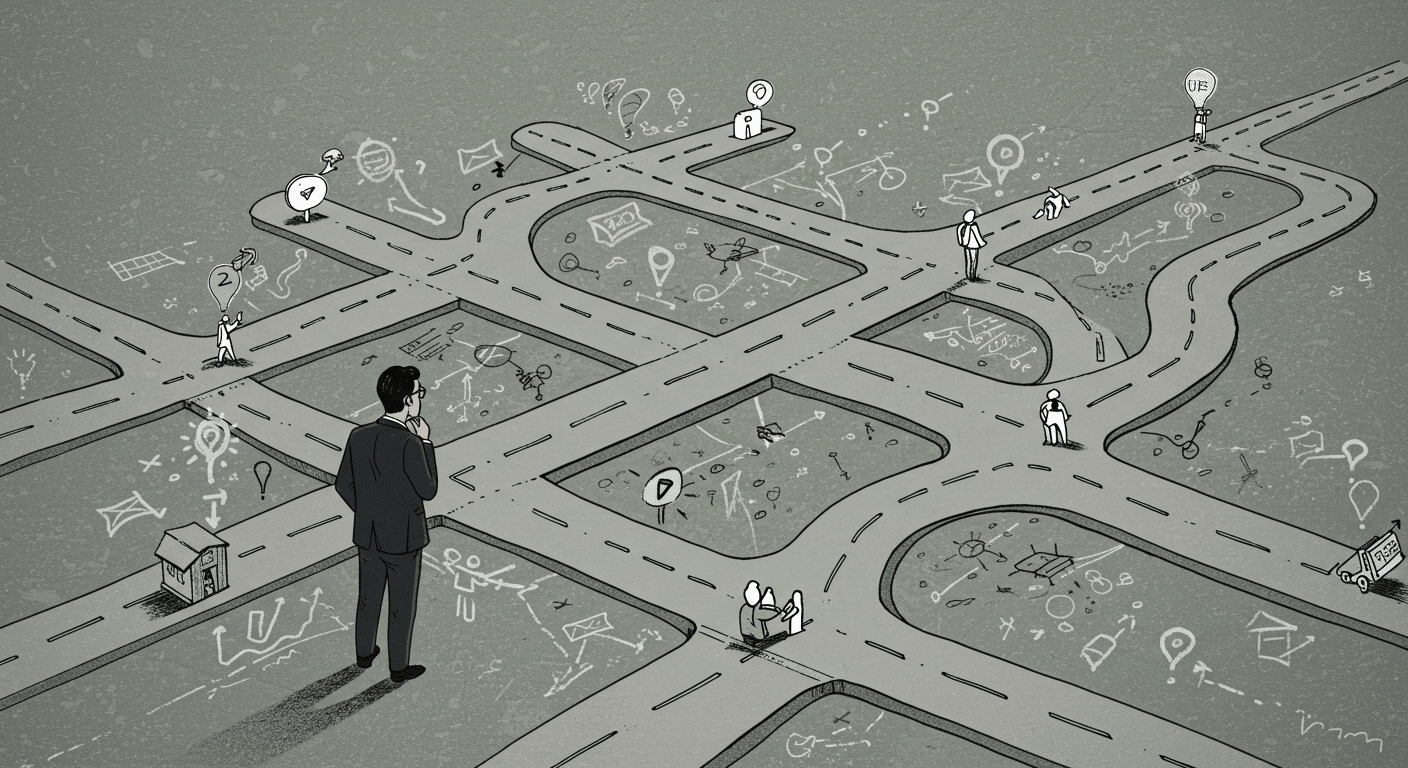How Synchronous and Asynchronous Communication Power Remote Team Productivity
The way we work is rapidly changing. Traditional ways of communicating are impossible or no longer effective. Leaders must establish new forms of communication to effectively share information through their organizations.
As with any new technology, however, if implemented without intention, information overload can soon follow. Creating effective and focused communication requires smart use of communication tools and iteration.
Understanding the types of communication and how they work together to power remote team productivity is critical in this moment of seismic change. Let’s break down the two main categories of communication, synchronous and asynchronous, and how they can work together to improve efficiency on your remote team.
What is synchronous communication?
Simply put, synchronous communication is communication with the expectation of an immediate response. Examples of synchronous communication include face-to-face conversations, phone calls, instant messaging, and zoom calls.
In the office, synchronous communication comprised the majority of communication. Employees were able to walk to each other’s desks, share information, and get responses in real-time. Meetings, huddles, and coffee chats created space to form relationships and solve problems in real-time.
Two particular use cases warrant a real-time sync up.
Firstly, synchronous communication is especially effective when written explanations are inadequate for conveying information and solving complex problems. As a guideline, anything that requires more than three back and forths on the same topic between two people should be resolved in a short sync up. Many topics that require long back and forth are resolved with quick check-ins because of the challenges of conveying the information in written form.
Secondly, synchronous communication is essential for team dynamics and building rapport. Kicking off a project with a new team, management 1-on-1s, and team daily huddles all benefit from the conversational traits of sync ups.
These engagements help set the foundations for future work and coordination of the other type of communication, asynchronous.
What is asynchronous communication?
In contrast, asynchronous communication is any communication without the expectation of an immediate response. Instead of a phone call, I leave a voicemail message. Instead of walking to your desk, I send an email. These allow you to consume information, process it, and respond on your own timeline.
Slack, email, snail mail, voicemail, video recordings, and social media posts are all examples of asynchronous communication. Whenever there is a need for delay between communication and response, asynchronous communication is preferable.
Written asynchronous communication can help convey complex information effectively, keep projects moving along, and save time. However teams must iterate on communication tactics over time to find the optimal mix for their situation.
Let’s compare which communication strategy may be right for your team.
What are the advantages of synchronous communication?
Firstly, any emergency or urgent situation that requires immediate response and action should utilize synchronous methods. Particularly if this relates to team health and safety or mission-critical operations.
Beyond emergencies, synchronous communication helps efficiency by timeboxing time spent communicating vs working. Researchers at HBR found workers spend an average of six hours a day checking email. The average slack user now sends 200 messages a day, with some power users sending more than 1,000 messages a day. While the 15% of company time spent in meetings can be reduced with efficient communication rhythms, real-time sync ups can eliminate the expectation that employees need to be online all the time.
As a guideline, every meeting should aim to be either a review of a concrete project plan or to set the stage for future asynchronous events. They should only occur when they are better suited to the task at hand than asynchronous communication.
Some team members may also prefer written communication. In Peter Drucker’s Managing Oneself he separates people into readers and listeners. Listeners find audio discussions more effective than written communication. Synchronous communication helps support the neurodiversity on your team.
Synchronous communication also helps foster vulnerability and open communication. Many people are more willing to speak their opinions because of the additional information tone of voice can convey. Recreating the informal water-cooler check-ins and informal bonding for remote teams means carving out dedicated time for synchronous team-building and check-ins.
For this reason, synchronous communication works well for team hangouts, bonding, and celebration.
When is asynchronous communication most effective?
Asynchronous communication has emerged as the preferred method for teams working across geographies and timezones. With the rapid shift to remote work during the COVID-19 outbreak, teams had to adapt to more asynchronous methods. As fyi founder Hitten Shah writes, “successful distributed work is a result of coordinated asynchronous communication”.
Asynchronous communication is advantageous for individual ideation and feedback. These activities benefit from individual reflection. The best responses will emerge when individuals are not affected by the opinions of those around them. Asynchronous communication allows team members to act on their own timelines before combining their work with others.
This ability to enable individual creativity and timelines makes asynchronous communication preferable for moving projects along efficiently on remote teams.
Every member of the team can do as much work as required before transferring ownership of a project to the next person. In this case, full documentation is key for effective handoffs. One team member is now free to move on to their next project. The person receiving the handoff should have a clear understanding of what they need to do to maintain progress.
While this has been common among software engineers building code for a while, its importance on distributed teams means asynchronous project progress is now a critical skill for marketers, HR professionals, and anyone performing project-oriented work.
What are some tips for Effective asynchronous communication?
Let’s break down some guidelines for getting the most out of asynchronous communication on remote teams.
- Experiment and iterate: finding the right mix of synchronous and asynchronous communication will depend on the team and the project. Consider trying an alternative work schedule pilot. Working parents and people with later chronotypes may be more productive with this increased flexibility compared to synchronous organizations.
- Provide plenty of context: Anticipating the information your recipient needs to respond adequately keeps projects moving along.
- Get visual: even if you’re not connecting on a zoom call, video or diagrams can be an effective form of asynchronous communication.
- Don’t Over Notify: Sending @Person or @Channel on Slack should be reserved for situations that require immediate action. Especially outside of agreed-upon hours, reducing this type of communication prevents overload.
- Set Expectations for Response Time: Timebox responses to emails to prevent the time-suck of constantly checking and responding to emails. An auto-response can be effective for setting these expectations. Tim Ferris suggests the following template in The 4-Hour Workweek:
“Greetings, Friends [or Esteemed Colleagues],
>Due to high workload, I am currently checking and responding to e-mail twice daily at 12: 00 P.M. ET [or your time zone] and 4: 00 P.M. ET.
If you require urgent assistance (please ensure it is urgent) that cannot wait until either 12: 00 P.M. or 4: 00 P.M., please contact me via phone at 555-555-5555.
Thank you for understanding this move to more efficiency and effectiveness. It helps me accomplish more to serve you better.
Sincerely,
[Your name]”
The Technology that Powers Effective Synchronous and Asynchronous Communication
Technology is critical for enabling communication for remote teams. Clearly defining use cases and expectations for response time for every platform ensures teams understand which tools to use when.
Tools that offer the flexibility to communicate both synchronously and asynchronously are especially useful for distributed teams during COVID. At Align, we record our updates for Daily Huddle check-ins in the Daily Huddle tool in Align. When we meet for our actual stand-ups and check-ins, even when an employee is unable to attend in person, we still have their update. Additionally, that update serves as a written record that can be revisited over time.
Technology is also critical for sharing progress and updates on projects. Teams that track their tasks and progress towards goals in a central place spend less time tracking down updates or in sync ups. Priority tracking ensures every team member knows where the team stands on its biggest objectives.
Having a system that enables both asynchronous information sharing, while also improving the efficiency of synchronous meetings, changes the game for remote teams. Feedback happens simultaneously and improvements are made continuously.
As teams around the world adapt to the workplace of the future, teams that effectively deploy these communications strategies will achieve more.




